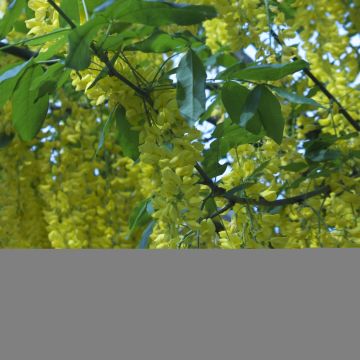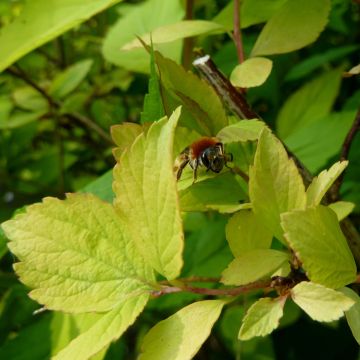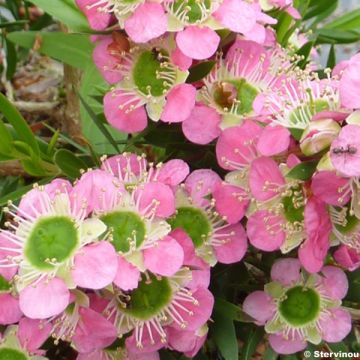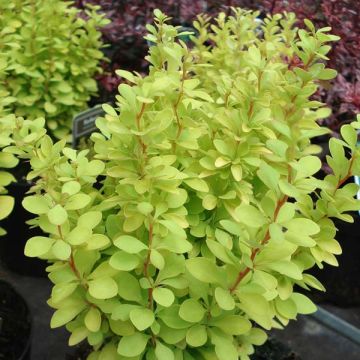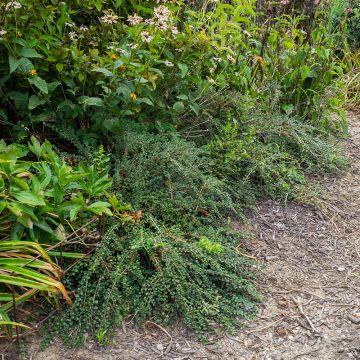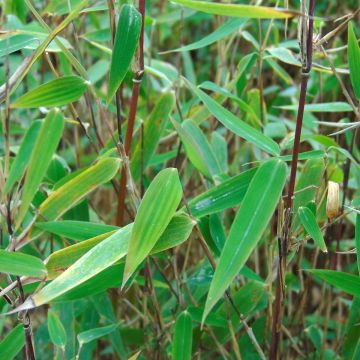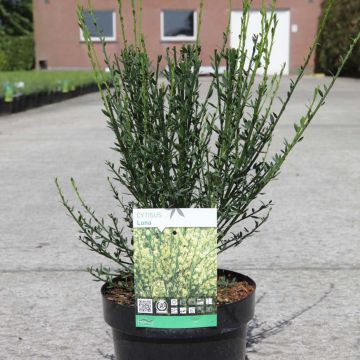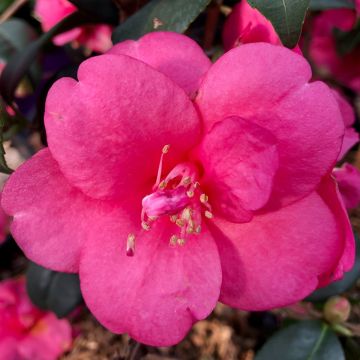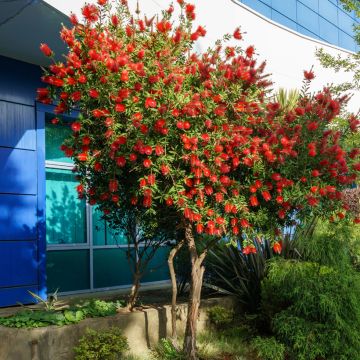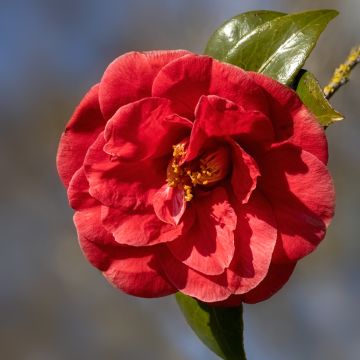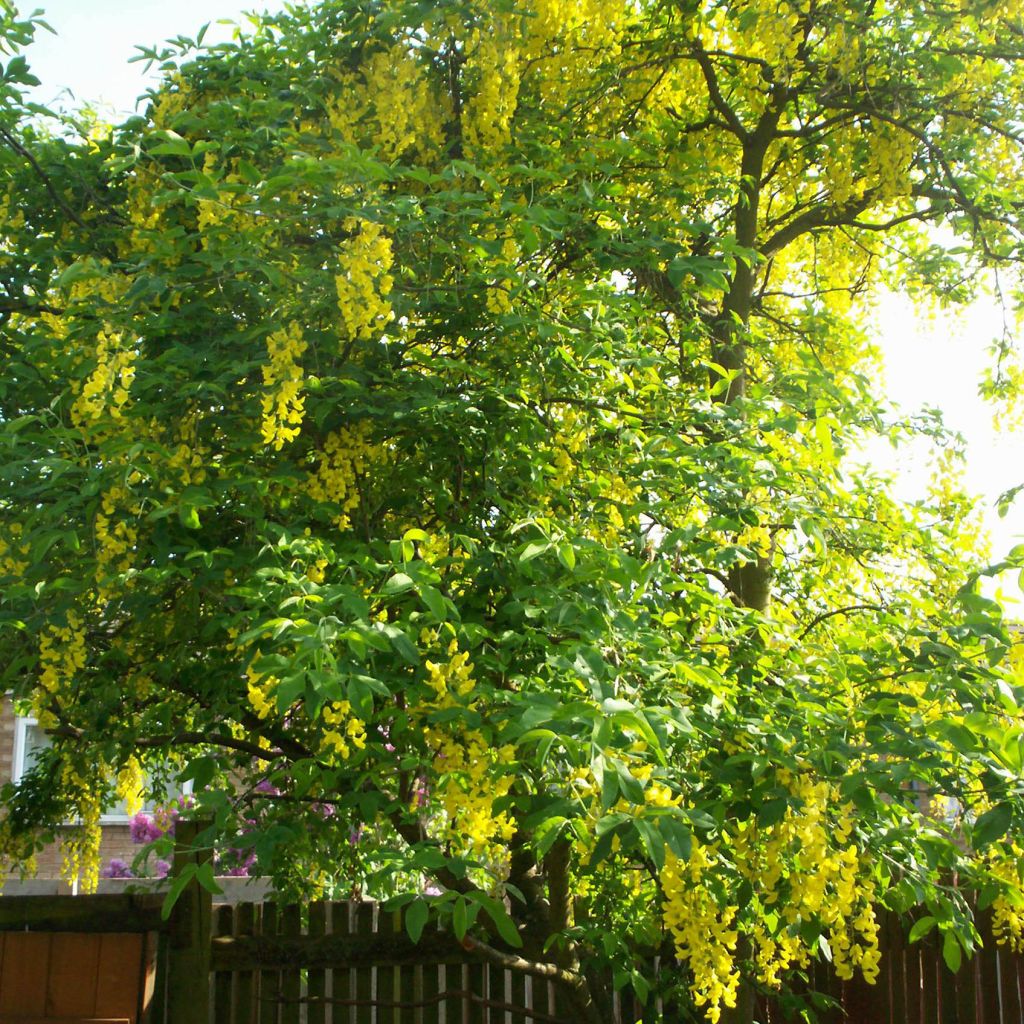

Cytise pluie d'or - Laburnum watereri Vossii
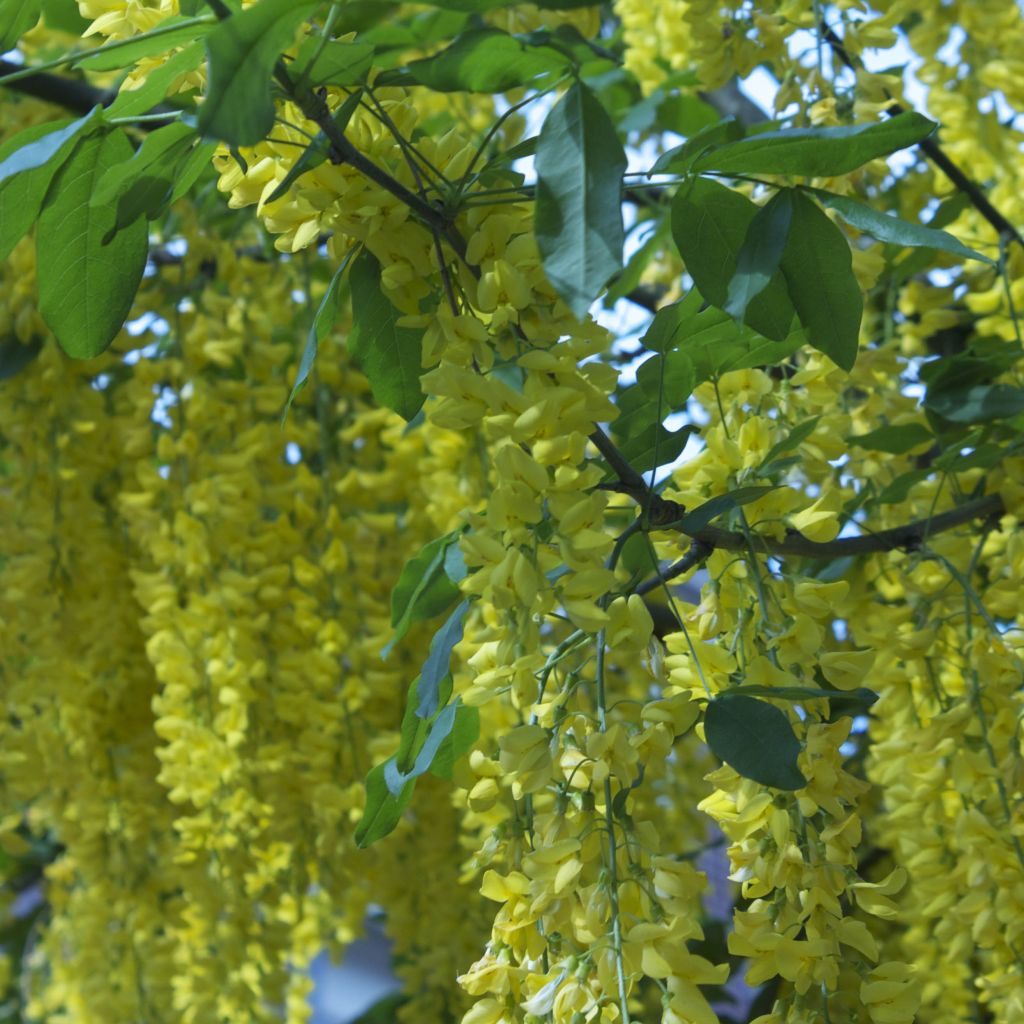

Cytise pluie d'or - Laburnum watereri Vossii
Laburnum x watereri Vossii
Laburnum x watereri Vossii
Golden Chain Tree
This item cannot be shipped to the selected country
Delivery charge from €5.90
More information
Schedule delivery date,
and select date in basket
This plant carries a 24 months recovery warranty
More information
We guarantee the quality of our plants for a full growing cycle, and will replace at our expense any plant that fails to recover under normal climatic and planting conditions.
From €5.90 for pickup delivery and €6.90 for home delivery
Express home delivery from €8.90.
Does this plant fit my garden?
Set up your Plantfit profile →
Description
Laburnum x watereri 'Vossii' also known as golden rain laburnum, is a very hardy deciduous bush, with remarkable, very long clusters of bright, fragrant yellow flowers. They bloom in late spring and early summer. This variety with dark foliage is perfectly adapted to poor free draining soils, even chalky and dry soils. This tall shrub, one of the prettiest in spring, prefers sunny exposures.
The 'Vossii' Laburnum, resulting from a hybridization between Laburnum anagyroides and Laburnum alpinus, belongs to the Fabaceae family, like wisteria or alfalfa. It has an erect and spreading habit, developing a trunk that branches from the base with spread out lateral branches. At maturity, it can reach up to 6 m high and with a span of 2 m. In spring, it has beautiful inflorescences in clusters, slender and long, that can measure more than 50 cm in length. Its honey-bearing, leguminous flowers, are tinged with lemon yellow, measuring approximately 14 to 17 mm (0.6 to 0.7 in) in diameter. Its dark green deciduous foliage is downy on the underside, and composed of three ovate leaflets. These leaves take on a very beautiful golden yellow autumn colour. Its bark is smooth, greenish-brown and the young shoots are green and covered with small hairs. This shrub does not produce fruits.
The 'Vossii' Laburnum looks its best when grown as a multi-stemmed shrub rather than a single stem tree. It is a very hardy bush and tolerates temperatures as low as -20°C (-4 °F). It is very resistant to pollution. To create a magical effect, plant several plants, spaced 3m (9 ft 10 in) apart on either side of a driveway: the branches will join to form an arch from which its flowering clusters will cascade down. At the foot of these shrubs plant ornamental garlic. Pass underneath and let yourself be carried away by their sweetly scented flowers. You can also add it to a rustic hedge, accompanied by other bushes such as lilac, wisteria kept as a tree, mock oranges, hazelnuts, Japanese quinces, or Japanese kerrias.
Caution all parts are toxic especially the seeds. The laburnum has a strongly coloured, shiny, hard, heavy wood that polishes very well, and is sought after by turners and cabinetmakers.
Report an error about the product description
Laburnum x watereri Vossii in pictures
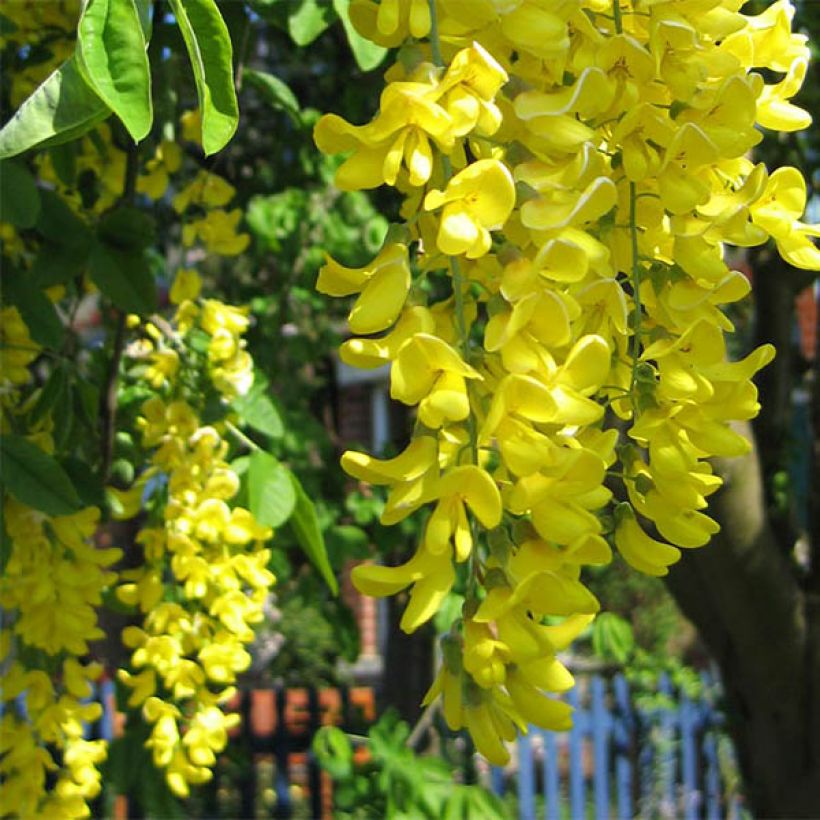

Plant habit
Flowering
Foliage
Botanical data
Laburnum
x watereri
Vossii
Fabaceae
Golden Chain Tree
Cultivar or hybrid
Other Laburnum
Planting and care
Laburnum x watereri 'Vossii' will thrive in the sun, in ordinary soil, even dry, limestone and poor. It does not tolerate stagnant, waterlogged soil. Add coarse sand to the bottom of the planting hole if your soil is heavy. Wait until the plant has finished flowering before pruning to balance the branches. Laburnum is not demanding, it tolerates drought, but it does not like drafts and strong winds which can reduce flowering. Do not leave the seed pods within the reach of children as they are very toxic. For an informal hedge, plant every 1.50 m (4 ft 11 in). The flowers should not be confused with the flowers of the Robinia pseudoacacia which are edible.
Planting period
Intended location
Care
-
, onOrder confirmed
Reply from on Promesse de fleurs
Hedge shrubs
Haven't found what you were looking for?
Hardiness is the lowest winter temperature a plant can endure without suffering serious damage or even dying. However, hardiness is affected by location (a sheltered area, such as a patio), protection (winter cover) and soil type (hardiness is improved by well-drained soil).

Photo Sharing Terms & Conditions
In order to encourage gardeners to interact and share their experiences, Promesse de fleurs offers various media enabling content to be uploaded onto its Site - in particular via the ‘Photo sharing’ module.
The User agrees to refrain from:
- Posting any content that is illegal, prejudicial, insulting, racist, inciteful to hatred, revisionist, contrary to public decency, that infringes on privacy or on the privacy rights of third parties, in particular the publicity rights of persons and goods, intellectual property rights, or the right to privacy.
- Submitting content on behalf of a third party;
- Impersonate the identity of a third party and/or publish any personal information about a third party;
In general, the User undertakes to refrain from any unethical behaviour.
All Content (in particular text, comments, files, images, photos, videos, creative works, etc.), which may be subject to property or intellectual property rights, image or other private rights, shall remain the property of the User, subject to the limited rights granted by the terms of the licence granted by Promesse de fleurs as stated below. Users are at liberty to publish or not to publish such Content on the Site, notably via the ‘Photo Sharing’ facility, and accept that this Content shall be made public and freely accessible, notably on the Internet.
Users further acknowledge, undertake to have ,and guarantee that they hold all necessary rights and permissions to publish such material on the Site, in particular with regard to the legislation in force pertaining to any privacy, property, intellectual property, image, or contractual rights, or rights of any other nature. By publishing such Content on the Site, Users acknowledge accepting full liability as publishers of the Content within the meaning of the law, and grant Promesse de fleurs, free of charge, an inclusive, worldwide licence for the said Content for the entire duration of its publication, including all reproduction, representation, up/downloading, displaying, performing, transmission, and storage rights.
Users also grant permission for their name to be linked to the Content and accept that this link may not always be made available.
By engaging in posting material, Users consent to their Content becoming automatically accessible on the Internet, in particular on other sites and/or blogs and/or web pages of the Promesse de fleurs site, including in particular social pages and the Promesse de fleurs catalogue.
Users may secure the removal of entrusted content free of charge by issuing a simple request via our contact form.
The flowering period indicated on our website applies to countries and regions located in USDA zone 8 (France, the United Kingdom, Ireland, the Netherlands, etc.)
It will vary according to where you live:
- In zones 9 to 10 (Italy, Spain, Greece, etc.), flowering will occur about 2 to 4 weeks earlier.
- In zones 6 to 7 (Germany, Poland, Slovenia, and lower mountainous regions), flowering will be delayed by 2 to 3 weeks.
- In zone 5 (Central Europe, Scandinavia), blooming will be delayed by 3 to 5 weeks.
In temperate climates, pruning of spring-flowering shrubs (forsythia, spireas, etc.) should be done just after flowering.
Pruning of summer-flowering shrubs (Indian Lilac, Perovskia, etc.) can be done in winter or spring.
In cold regions as well as with frost-sensitive plants, avoid pruning too early when severe frosts may still occur.
The planting period indicated on our website applies to countries and regions located in USDA zone 8 (France, United Kingdom, Ireland, Netherlands).
It will vary according to where you live:
- In Mediterranean zones (Marseille, Madrid, Milan, etc.), autumn and winter are the best planting periods.
- In continental zones (Strasbourg, Munich, Vienna, etc.), delay planting by 2 to 3 weeks in spring and bring it forward by 2 to 4 weeks in autumn.
- In mountainous regions (the Alps, Pyrenees, Carpathians, etc.), it is best to plant in late spring (May-June) or late summer (August-September).
The harvesting period indicated on our website applies to countries and regions in USDA zone 8 (France, England, Ireland, the Netherlands).
In colder areas (Scandinavia, Poland, Austria...) fruit and vegetable harvests are likely to be delayed by 3-4 weeks.
In warmer areas (Italy, Spain, Greece, etc.), harvesting will probably take place earlier, depending on weather conditions.
The sowing periods indicated on our website apply to countries and regions within USDA Zone 8 (France, UK, Ireland, Netherlands).
In colder areas (Scandinavia, Poland, Austria...), delay any outdoor sowing by 3-4 weeks, or sow under glass.
In warmer climes (Italy, Spain, Greece, etc.), bring outdoor sowing forward by a few weeks.

































